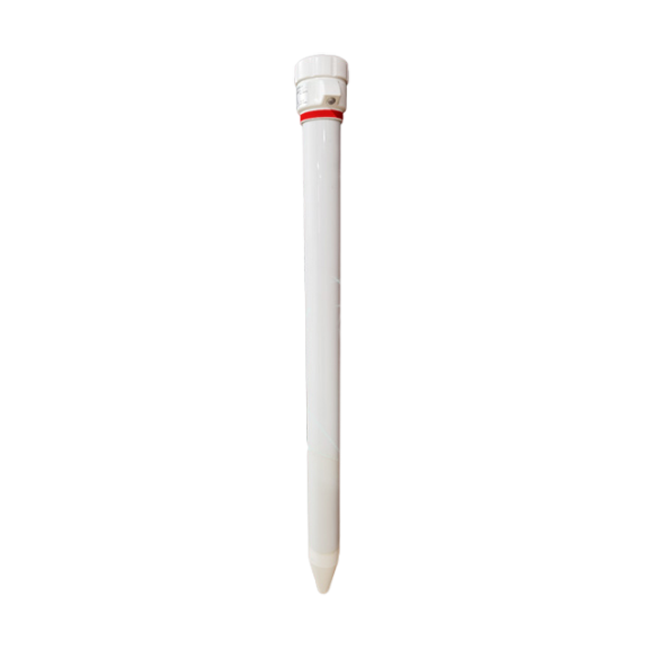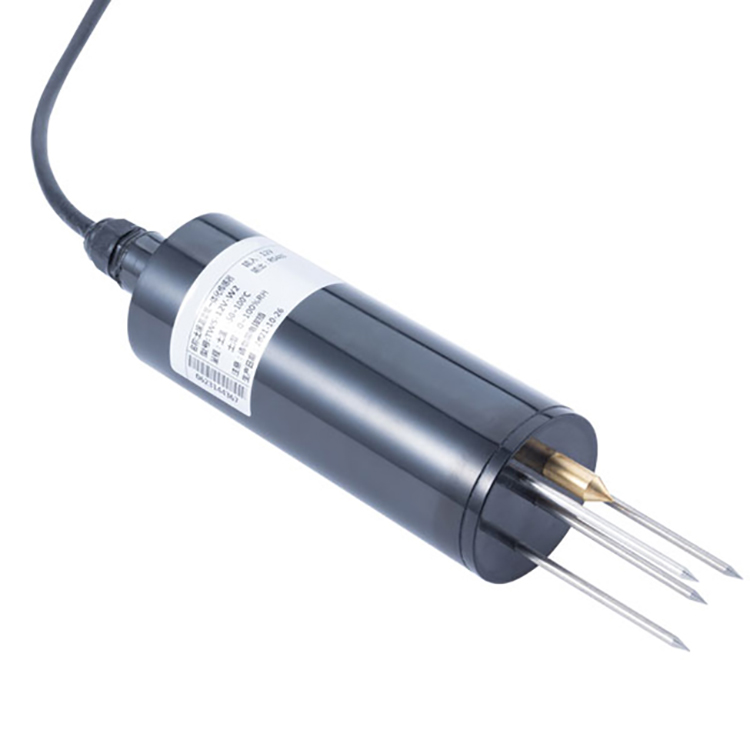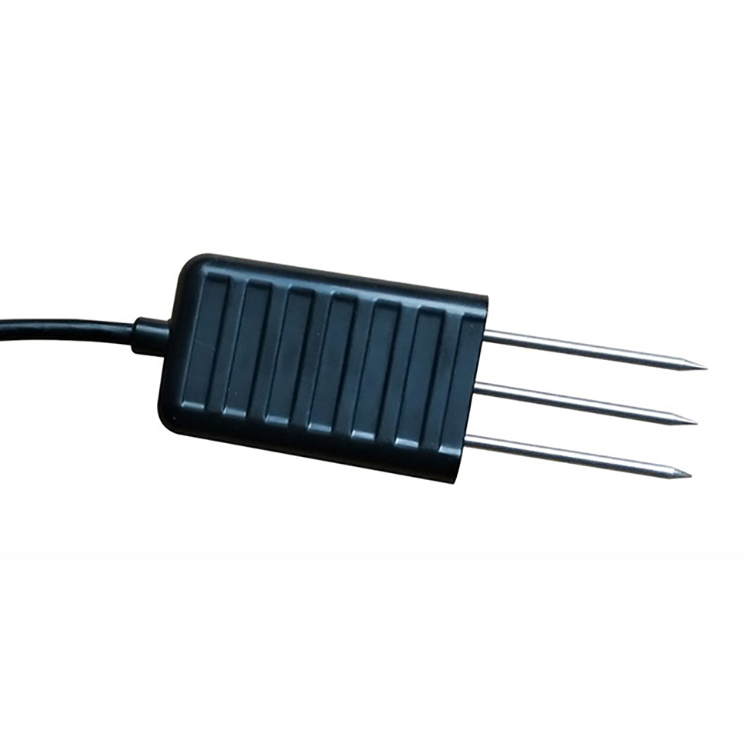

— Products —
 Consumer hotline +8618073152920
Consumer hotline +8618073152920 WhatsApp:+8615367865107
Address:Room 102, District D, Houhu Industrial Park, Yuelu District, Changsha City, Hunan Province, China
All products
Soil humidity sensor, also known as a soil moisture meter and soil moisture probe, is a device used to measure soil moisture. This sensor usually consists of a stainless steel probe and a waterproof probe, which can be used for long-term burial in soil and embankments for spot monitoring and online measurement of moisture in surface and deep soil. The sensors are generally encapsulated in a PVC housing with epoxy resin. Widely used in agriculture, horticulture and irrigation ···
Tel/WhatsApp:+8615367865107
Email:Arvin@niubol.com +Nearly 100 partner company in more than 68 countries. We are committed to providing high-quality, practical products to meet your needs and help you solve problems.Product Details
Soil humidity sensor, also known as a soil moisture meter and soil moisture probe, is a device used to measure soil moisture. This sensor usually consists of a stainless steel probe and a waterproof probe, which can be used for long-term burial in soil and embankments for spot monitoring and online measurement of moisture in surface and deep soil. The sensors are generally encapsulated in a PVC housing with epoxy resin.
Widely used in agriculture, horticulture and irrigation management, this sensor can help to precisely control water availability and improve crop yield and quality. It can also be used in environmental monitoring, geological survey and other fields.
 |  |  |  |
| Multi depth soil moisture sensor | Soil humidity and temperature sensor | 3-in-1 Soil Temperature Humidity EC Sensor | 4-in-1 Soil Temperature Moisture EC Salt Sensor |
Time Domain Reflectometry (TDR) Probes: TDR probes determine soil moisture content by measuring the time it takes for an electrical pulse to travel along a metal rod inserted into the soil. Moist soil conducts electricity more quickly than dry soil, enabling the probe to calculate moisture levels.

Multi depth soil moisture sensor
Multi depth soil moisture sensor adopts FDR principle, according to the electromagnetic wave issued by the monitor in different dielectric coefficients of material frequency changes measured in each soil layer of humidity, the use of high-precision digital temperature sensor, measuring the temperature of each soil layer. Measuring the temperature and humidity of 10cm, 20cm, 30cm, 40cm, 50cm, 60cm soil layer at the same time, it is suitable for long-term and uninterrupted monitoring of representative soil; it can be built-in DTU and lithium battery, and can provide RS485 output, and it can also transmit the data to the Internet of Things data platform through 4G/5G wireless network, and view the data in real time with computer and mobile phone, which is convenient and quick, and greatly meets the needs of all aspects of use. It is convenient and quick, which greatly meets the needs of various aspects of use.

This soil temperature and humidity monitor (Multi depth soil moisture sensor) has many advantages such as lightweight, easy to install, easy to use, accurate measurement. The instrument adopts precision sensors and intelligent chips, and is composed of soil moisture sensor, soil temperature sensor, solar power supply and transmission device.
At present, the product is widely used in environmental information monitoring and collection in agriculture, forestry, environmental protection, water conservancy, meteorology and other industry sectors, and also applied to water-saving irrigation, flower gardening, grass pasture, soil quick test, plant cultivation, greenhouse control, fine agriculture and so on, in order to meet the needs of scientific research, production, teaching and other related work.

Soil humidity sensors provide valuable information about the water availability in the soil, helping farmers, gardeners, and researchers make informed decisions regarding irrigation management and plant health.
Soil humidity sensors have a wide range of applications in agriculture, horticulture, and environmental science. Here are some specific examples of their uses:
1. Precision Irrigation: Soil humidity sensors can be used to optimize irrigation practices, reduce water usage, and improve crop yield and quality. By monitoring soil moisture levels in real-time, farmers and gardeners can adjust their irrigation schedules and amounts based on the specific needs of the plants.
2. Soil Moisture Mapping: Soil humidity sensors can be used to create soil moisture maps, which can help identify areas of high or low soil moisture content in fields or gardens. This information can be used to make targeted irrigation decisions or to better understand the variability in soil moisture across a landscape.
3. Environmental Monitoring: Soil humidity sensors can be used in environmental research to study the impacts of climate change, land use changes, and other factors on soil moisture. They can provide valuable data for hydrological modeling, watershed management, and ecosystem studies.
4. Greenhouse Management: Soil humidity sensors can be used in greenhouse settings to monitor soil moisture levels and optimize plant growth. By maintaining optimal soil moisture conditions, plants can receive adequate water and nutrients, leading to healthier growth and higher yields.
5. Soil Health Assessment: Soil humidity sensors can be used to assess soil health and fertility. By monitoring soil moisture over time, farmers and gardeners can gain insights into soil characteristics, such as soil structure, organic matter content, and nutrient availability. This information can be used to inform soil management practices and improve soil health.
Overall, soil humidity sensors are versatile tools that can help optimize irrigation practices, improve plant health, and promote sustainable agriculture and environmental management.
1. Principle of Operation soil humidity sensors: Soil humidity sensors utilize various techniques to measure the moisture content in the soil. The most common methods include capacitance-based sensors, resistance-based sensors, and time domain reflectometry (TDR). Each technique has its advantages and limitations, but they all aim to measure the dielectric properties or electrical conductivity of the soil, which correlates with soil moisture.
2. Irrigation Optimization: Soil humidity sensors assist in optimizing irrigation practices by providing real-time or continuous measurements of soil moisture levels. By monitoring the soil moisture content, farmers and gardeners can determine when and how much water to apply, helping to prevent overwatering or underwatering. This can improve water use efficiency, conserve water resources, and promote healthier plant growth.
3. Plant Health and Nutrient Uptake: Soil moisture plays a crucial role in plant health and nutrient uptake. Monitoring soil humidity helps ensure that plants receive adequate water for their growth and development. By maintaining optimal soil moisture conditions, nutrients become more available to plant roots, supporting efficient nutrient uptake and minimizing nutrient leaching.
4. Research and Data Collection: Soil humidity sensors are widely used in agricultural research to study plant-water relationships, soil physics, and hydrological processes. They help researchers understand soil moisture dynamics, analyze water movement in different soil types, and develop models for irrigation scheduling or water management strategies.
5. Smart Irrigation Systems: Soil humidity sensors can be integrated into automated irrigation systems, allowing for precise control and adjustment of irrigation schedules based on real-time soil moisture data. This helps optimize water application, reduce water waste, and contribute to sustainable irrigation practices.
It's important to note that soil humidity sensors may require calibration for accurate measurements, as soil characteristics can influence the sensor readings. Additionally, proper installation and maintenance practices, such as ensuring good soil-sensor contact and periodic sensor calibration, are essential for obtaining reliable and consistent data from soil humidity sensors.
Sensors & Weather Stations Catalog
Agriculture Sensors and Weather Stations Catalog-NiuBoL.pdf
Weather Stations Catalog-NiuBoL.pdf
Related recommendations
 Multi-Depth Soil Sensor RS485
Multi-Depth Soil Sensor RS485 TDR Soil Moisture Sensor
TDR Soil Moisture Sensor Pyranometer Solar Radiation Sensors
Pyranometer Solar Radiation Sensors Soil ph sensor
Soil ph sensor Tipping Bucket Rain Gauge
Tipping Bucket Rain Gauge Air Temperature and Humidity Sensor
Air Temperature and Humidity Sensor
Screenshot, WhatsApp to identify the QR code
WhatsApp number:+8615367865107
(Click on WhatsApp to copy and add friends)